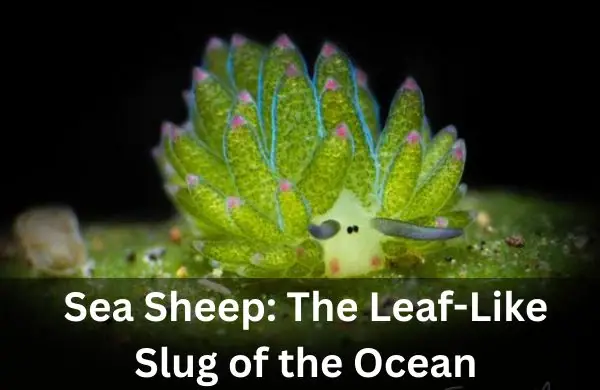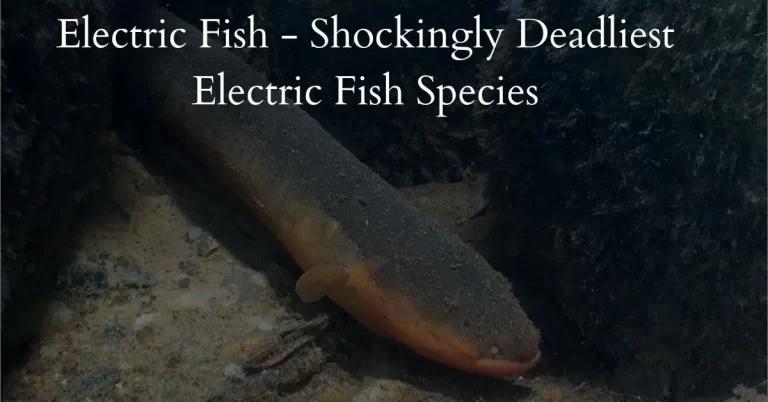Triggerfish | Guardians of the Coral Reefs
In the vast and captivating world of marine life, triggerfish stands out as an extraordinary group of fish. From their vibrant colors and intricate patterns to their fascinating behaviors and adaptations, triggerfish have captured the attention of scientists, divers, and aquarium enthusiasts alike.
In this blog post, we will embark on a journey to explore the captivating world of triggerfish, uncovering their diverse species, unique traits, ecological significance, and intriguing interactions with humans.
Get ready to dive into the depths of knowledge as we unveil the secrets of triggerfish. Whether you’re a marine life enthusiast, an aspiring aquarist, or simply curious about the ocean’s wonders, this blog post will provide valuable insights into the intriguing world of triggerfish.

.
Key Point
- Triggerfish belong to the family Balistidae, which consists of approximately 40 different species found in tropical and subtropical oceans worldwide.
- Triggerfish are known for their vibrant colors and intricate patterns. They display various hues, including blues, yellows, greens, oranges, and blacks.
- The name “triggerfish” comes from the mechanism of their first dorsal spine, which can be locked in place by the second spine, resembling a trigger.
- Triggerfish possess strong teeth that resemble a beak, allowing them to crush the hard shells of crustaceans and mollusks, their preferred prey.
- Triggerfish are highly territorial and establish and defend specific areas of the reef or substrate.
- Some triggerfish species have the ability to change their coloration and patterns to blend into their surroundings.
- Triggerfish have a unique way of communicating through grunting or popping sounds.
.
Scientific Classification
Scientific name: Balistidae Rank: Family Kingdom: Animalia Phylum: Chordata Class: Actinopterygii Order: Tetraodontiformes Family: Balistidae
.
Overview
Before delving into the specifics of triggerfish, let’s start with a general overview of these fascinating creatures. Triggerfish belong to the family Balistidae, which is comprised of approximately 40 species spread across tropical and subtropical oceans around the world. These fish exhibit a wide range of sizes, colors, and patterns, making them a visually captivating group.
Triggerfish are known for their distinct body shape, characterized by a compressed, oval-shaped body with a large head and small mouth. Their pair of strong, beak-like teeth, which allow them to consume a variety of food, including crabs, mollusks, and even sea urchins, is one of their most distinctive characteristics.
Their name “triggerfish” originates from a unique dorsal fin arrangement, where the first spine of the fin can be locked into place by the second spine, resembling a trigger mechanism. This feature serves as a defense mechanism, allowing these to wedge themselves into crevices, making it difficult for predators to extract them.
A variety of marine environments, including seagrass meadows and sandy bottoms, as well as coral reefs and rocky coasts, are home to triggerfish. Although several species may also be found in the Atlantic Ocean, the Indo-Pacific region is where they are most frequently found.
Now that we have a general understanding of triggerfish, let’s dive deeper into their intriguing behaviors, remarkable adaptations, and the significant role they play in their respective ecosystems.
.
Behavioral Traits and Adaptations
Triggerfish exhibit a variety of intriguing behavioral traits and adaptations that contribute to their survival and success in their marine environments. Let’s explore some of these fascinating characteristics:
1. Territorial Nature
Triggerfish are known for their territorial behavior. They establish and fiercely defend their territories, which often include a specific patch of coral reef or rocky substrate. Male triggerfish are particularly protective during the breeding season, guarding their nests and eggs against potential threats.
2. Nest Building
Certain species of triggerfish, such as the titan triggerfish, are known for their impressive nest-building abilities. They construct large nests on the seafloor using sand, coral rubble, and debris. These nests serve as protective shelters for their eggs and provide a safe environment for the developing young.
3. Feeding Habits
Triggerfish have a diverse diet that varies depending on the species and their habitat. They feed on a wide range of prey, including small fish, crustaceans, mollusks, sea urchins, and even coral polyps. Some triggerfish species have specialized feeding techniques, such as the Picasso triggerfish, which uses its strong jaws to crack open shells and feed on the hidden delicacies inside.
4. Adaptations for Feeding
Triggerfish possess specialized teeth and powerful jaws, allowing them to crush and consume hard-shelled prey. Their teeth are designed to crush the exoskeletons of crustaceans and the protective shells of mollusks. This adaptation enables these to exploit food sources that are inaccessible to many other fish species.
5. Camouflage and Coloration
Many triggerfish species exhibit vibrant colors and intricate patterns, which serve multiple purposes. These striking colors can be used for communication and species recognition within their social groups. Additionally, some triggerfish have the ability to change their coloration to match their surroundings, providing effective camouflage to blend into their environment and avoid predators.
6. Social Structure
Some triggerfish species display complex social structures. They often form small groups or pairs consisting of a dominant male and several females. These social bonds play a role in reproductive activities and territorial defense.
These behavioral traits and adaptations make these unique and well-adapted to their environments. Their territorial nature, nest-building abilities, specialized feeding habits, and striking coloration all contribute to their ecological success and their intriguing presence in the underwater world.

.
Ecological Significance
Triggerfish play a crucial role in coral reef ecosystems, making them ecologically significant. Here are some key aspects of their ecological significance:
1. Control of Prey Populations
Triggerfish are voracious predators and play a vital role in controlling the populations of their prey. They feed on a variety of organisms, including small fish, crustaceans, and mollusks. By regulating the abundance of these prey species, this help maintains a balanced ecosystem and prevent the overpopulation of certain organisms.
2. Algae and Coral Reef Health
Some triggerfish species, like the titan triggerfish, feed on algae that can smother coral reefs if left unchecked. These fish graze on the algae, helping to keep its growth in balance and preserve the health of coral reefs. This herbivorous behavior contributes to the overall biodiversity and resilience of coral reef ecosystems.
3. Reef Structure and Bioturbation
Triggerfish contribute to the structural complexity of coral reefs through their nesting and foraging behaviors. As they dig nests and excavate substrate while searching for prey, they create small pits and disturbances in the sand or coral rubble. These actions promote bioturbation, which enhances nutrient cycling, sediment turnover, and the recruitment of other marine organisms.
4. Coral Recruitment and Distribution
Triggerfish can inadvertently aid in coral recruitment and dispersal. When feeding on coral polyps or excavating substrate, they may dislodge coral fragments or release coral larvae into the water column. This can contribute to the dispersal and colonization of corals in new areas, promoting genetic diversity and the expansion of coral reef habitats.
5. Interaction with Cleaner Fish
Trigger Fish also has an interesting interaction with cleaner fish, such as cleaner wrasses. These cleaner fish establish cleaning stations where they remove parasites and dead skin from other fish. These fish often visit these cleaning stations, benefiting from the cleaning service. This mutualistic relationship helps maintain the health and hygiene of triggerfish and other reef fish.
Given their role as predators, herbivores, and ecosystem engineers, the presence and activity of triggerfish have a significant impact on the overall health and functioning of coral reef ecosystems. However, it is important to note that if their population declines due to human activities or other factors, the ecological balance may be disrupted. Conservation efforts are essential to protect triggerfish and ensure the preservation of their ecological significance in coral reef ecosystems.
.
Popular Species of Triggerfish
Several triggerfish species have gained popularity among divers, aquarists, and marine life enthusiasts due to their striking appearances and intriguing behaviors. Let’s take a closer look at some of the most popular species of triggerfish:
1. Picasso Triggerfish (Rhinecanthus aculeatus): The Picasso triggerfish is one of the most recognizable and sought-after species. It features a vibrant color palette with bold patterns, resembling a work of art. The body is predominantly yellow with black lines, spots, and splashes of blue and green. Picasso triggerfish are known for their curious and sometimes aggressive behavior, making them a fascinating species to observe.
2. Clown Triggerfish (Balistoides conspicillum): The clown triggerfish is renowned for its distinct coloration and unique body shape. It has a vibrant yellow body adorned with bold black and white patterns, including large spots and lines. This triggerfish species has an elongated snout and eyes set far back on its head. While visually striking, the clown triggerfish can be quite territorial and aggressive, particularly when defending its nest.
3. Blue Jaw Triggerfish (Xanthichthys auromarginatus): The blue jaw triggerfish is named after its distinctive blue lower jaw, which contrasts beautifully with its yellow body. It also has striking blue lines along its body and fins. This species is relatively peaceful compared to some other triggerfish, making it more suitable for community aquariums. Blue jaw triggerfish are known for their inquisitive nature and ability to interact with divers.
4. Titan Triggerfish (Balistoides viridescens): The titan triggerfish is the largest species in the triggerfish family, reaching lengths of up to 75 centimeters (30 inches). It has a bold, contrasting color pattern with a dark body and a vibrant yellowish-orange face and fins. Titan triggerfish are known for their aggressive territorial behavior, particularly during the breeding season when they guard their nests. Divers often encounter these impressive fish in their natural habitat.
5. Undulated Triggerfish (Balistapus undulatus): The undulated triggerfish features a unique undulating pattern on its body, composed of wavy lines and spots. Its primary hues are a blend of blue, green, and yellow. Due to its remarkable adaptability, this species may survive in a wide range of maritime settings, including rocky shorelines and coral reefs. The undulated triggerfish is known for its inquisitive nature and its ability to change coloration and patterns to blend into its surroundings.
These are just a few examples of the popular triggerfish species that captivate the attention of marine enthusiasts. Each species offers its own distinct beauty, behaviors, and characteristics, adding to the allure and diversity of triggerfish in both natural and captive settings.
.
Interaction with Humans
Triggerfish have a complex and varied interaction with humans, encompassing both positive and potentially challenging aspects. Let’s explore some of these interactions:
Aquarium Trade
Many triggerfish species are popular choices for home and public aquariums due to their vibrant colors and unique behaviors. They can be captivating additions to aquarium displays, showcasing their striking patterns and intriguing personalities. However, it’s important to note that triggerfish have specific care requirements and can be challenging to maintain in captivity, especially larger species that require spacious tanks.
Diving and Snorkeling
Trigger Fish is often encountered by divers and snorkelers in tropical reef environments. Their bold colors and curiosity make them a highlight of underwater experiences. However, it’s essential to approach triggerfish with caution and respect their territorial nature. During the breeding season, triggerfish can become particularly aggressive and may exhibit defensive behavior, including biting if they feel threatened or cornered.
Conservation and Protection
Triggerfish, like many other marine species, face threats due to habitat degradation, overfishing, and destructive fishing practices. Conservation efforts are essential to protect triggerfish populations and the delicate balance of coral reef ecosystems. Conservation organizations and initiatives work towards raising awareness, implementing sustainable fishing practices, and establishing marine protected areas to safeguard triggerfish habitats.
Human-Fish Interaction:
In certain regions, triggerfish have become accustomed to interactions with humans, especially in areas where feeding occurs. While it may be tempting to feed triggerfish, it is crucial to avoid this practice. Feeding disrupts their natural feeding behaviors, creates a dependency on human food, and can lead to negative consequences for both the triggerfish and the marine ecosystem.
Cultural Significance
Triggerfish hold cultural significance in some regions. For example, in the Maldives, the triggerfish is considered the national fish and is depicted in traditional art and crafts. In Hawaiian mythology, the reef triggerfish, known as humuhumunukunukuapua’a, is considered a sacred fish and holds symbolic importance.
It’s important for individuals to respect and appreciate triggerfish in their natural environment, maintain responsible diving practices, and support conservation efforts that aim to protect these remarkable creatures. By fostering a harmonious coexistence with triggerfish, we can ensure their preservation and the continued enjoyment of their beauty for generations to come.

.
Conclusion
In the end, a triggerfish is a captivating group of fish that enthrall us with their vibrant colors, intricate patterns, and fascinating behaviors. From their territorial nature and nest-building abilities to their specialized feeding habits and striking adaptations, triggerfish possess a unique set of traits that contribute to their ecological significance and make them a source of wonder in the marine world.
These fish play a crucial role in maintaining the balance of coral reef ecosystems by controlling prey populations, promoting algae and coral reef health, and contributing to the structural complexity of reef habitats. Their interactions with cleaner fish and their potential role in coral recruitment further emphasize their ecological importance.
Popular triggerfish species like the Picasso triggerfish, clown triggerfish, and blue jaw triggerfish capture our attention with their stunning appearances and engage us with their distinct behaviors. They have become beloved inhabitants of aquariums and are encountered by divers and snorkelers in tropical reef environments.
However, it is essential to approach triggerfish with caution, respecting their territorial nature and refraining from practices such as feeding that can disrupt their natural behaviors. Conservation efforts are crucial to protect triggerfish populations and their habitats from the threats posed by habitat degradation and overfishing.
As we appreciate the beauty and uniqueness of triggerfish, let us also recognize the need for responsible interaction and conservation. By fostering a deep respect for these remarkable creatures and supporting efforts to preserve their habitats, we can ensure the continued existence of triggerfish and the preservation of their ecological significance in the intricate tapestry of the underwater world.
Read Also:
- Unveiling the Beauty of Discus Fish: A Comprehensive Guide
- Sea Butterflies: Discovering the Delicate Wonders of the Ocean
- Blanket Octopus: Nature’s Hidden Wonder






